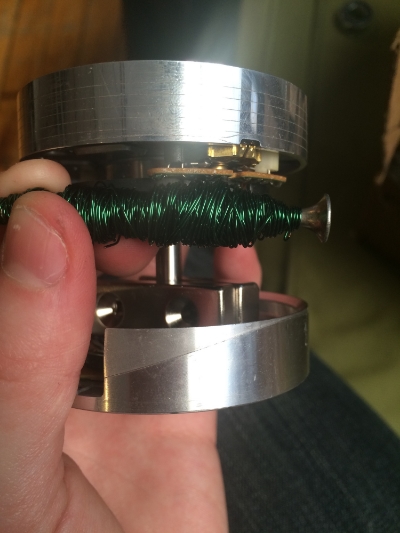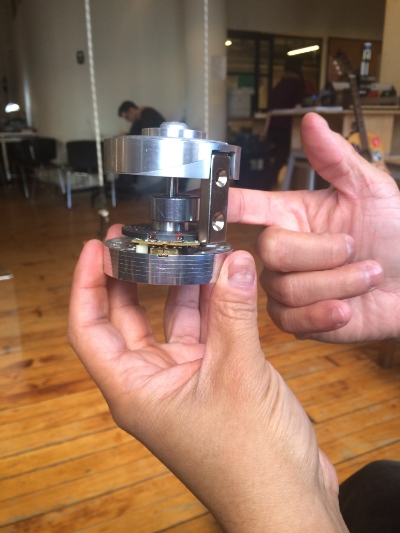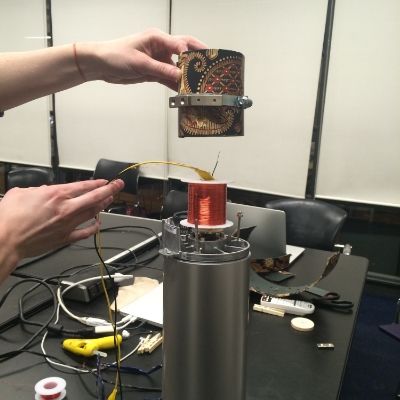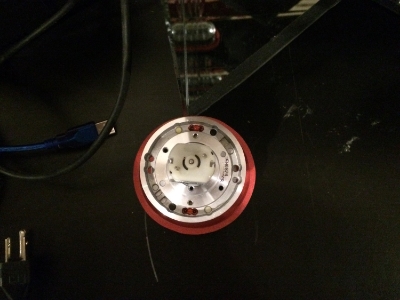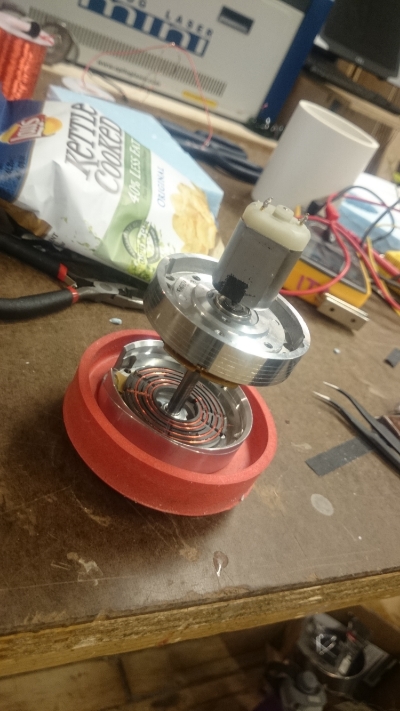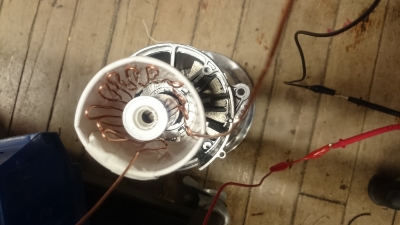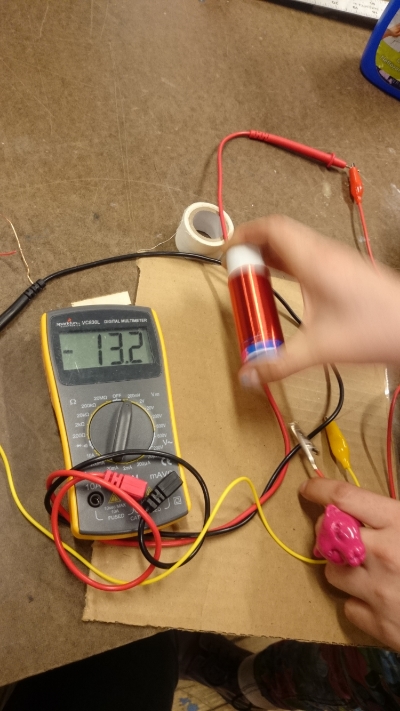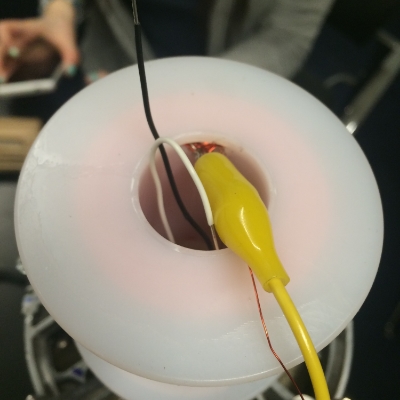For the Energy 2015 Kinetic Challenge teammate Isabel Paez and I explored the very roots of modern electricity with a simple lab: we made our own generator to convert "human" energy rather poorly. Forrest Mims' illustrated guide to Getting Started in Electronics inspired us initially to not take the DC motor for granted as a self-enclosed unit.
Then we generated electricity using a DC motor to momentarily light an LED. This was a good exercise to absorb how much energy needs to be converted to keep a load powered in a useful way.
Next we took one apart. We saw where copper coils, wrapped around an iron body on an axis and soldered to contacts transfer electrons directly to power and ground via brushes.
Our next step was to solder power and ground wires to the copper coils inside a VCR playhead motor and get a physical sense of how much power could be generated kinetically. After reading about gear ratios we theorized if we spun this low-friction converter with our hand it would work similarly to a gear train with a low-ratio.
We designed and prototyped various kinetic power generator using a stiff magnetic pendulum to apply magnetic force to a converter made of CPU fans and small disc magnets.
We researched mechanisms to move the magnet we believed would be doing work.
This turned out to be bogus. As this fatherly YouTuber made us finally realize: don't bother using YouTube to do research for building a homemade generator if you don't already know exactly what constitutes a violation of the laws of thermodynamics. We found out some ways that do! Because:
- Magnets can do no work! Because symmetry.
Also neodymium magnets are nothing to be trifled with. They will pinch you. Hard.
After giving up on the 'free energy' flavor we continued our efforts to make a homemade generator.
These efforts ultimately failed to produce any substantial current because:
- Copper windings must not cross each other. The more the better. The more perfect the better.
- The magnets - whether cast as stator or rotor must be close enough for their field to excite the coils in the electrons. This is not as simple to engineer as one might think.
- Copper coil resists rapid change in direction.
- The orientation of the coil versus the orientation of the magnet's poles is significant - we had difficulty engineering this with parts we found/ordered in the time given.
We learned a lot about how much energy it takes to generate energy - it is not just the fuel or the force that is applied to a man-made system - it's the energy required to innovate, engineer and manufacture.
Ultimately we made a circuit which fulfilled the basic requirements of the project but which found no innovation in form or function - paying tribute to the millenia-long struggle of humanity to its efforts into useable energy.






